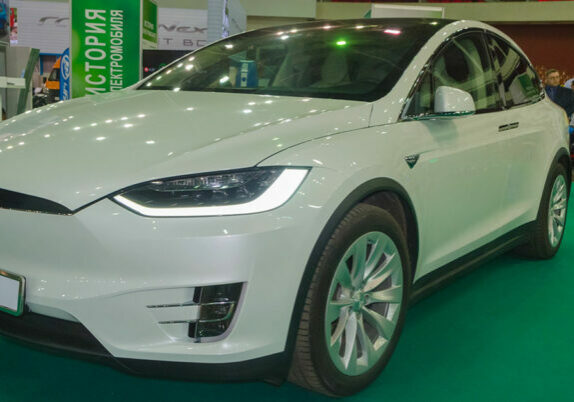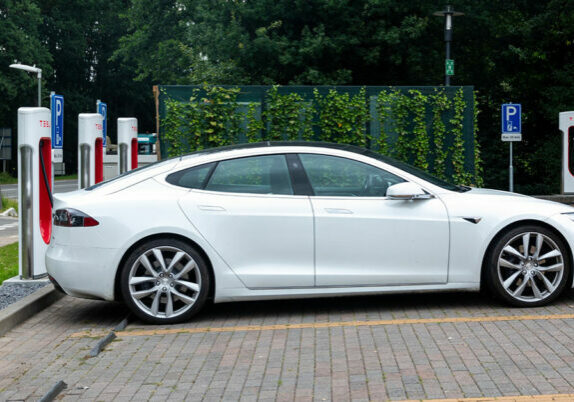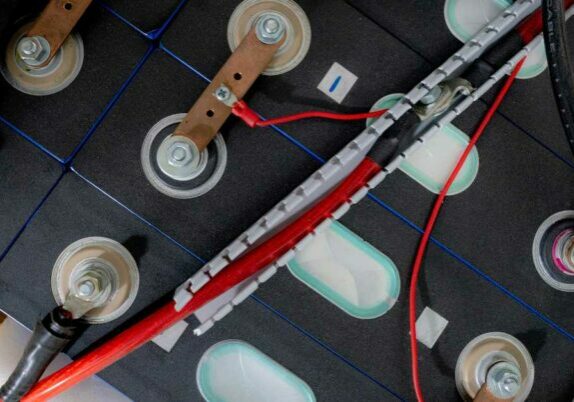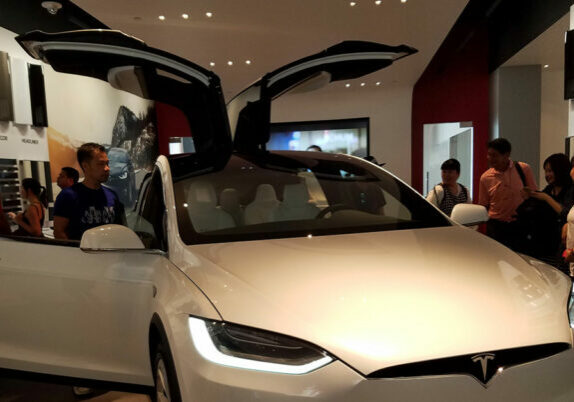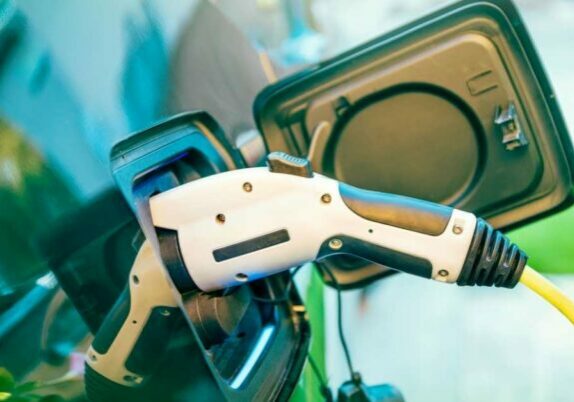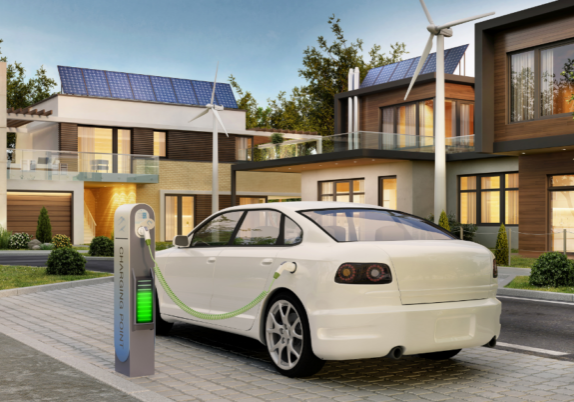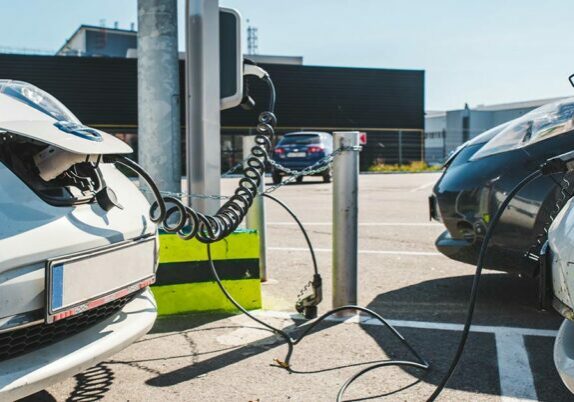So, you’ve finally made the switch to an electric car. Congratulations! You’re doing your part for the environment and enjoying a smoother, quieter ride. But wait… you have some errands to run and need to leave your car idling while you take care of business. How long can an electric car idle, you ask? Well, buckle up because we’re about to take a deep dive into the world of electric car batteries.
First things first: forget everything you know about traditional gas-powered cars. Electric cars are a whole new ballgame when it comes to idling. While gas-powered cars need to keep their engines running constantly in order to generate power, electric cars don’t work that way. Instead, they use batteries that store energy and power the motor directly.
So technically speaking, an electric car can idle indefinitely as long as its battery has enough charge left. However, there are several factors that can affect the life of your battery and ultimately determine how long you should let your car idle for without recharging.
Let’s explore these factors in more detail next.
Key Takeaways
- Electric cars can idle for extended periods of time as long as the battery has enough charge left.
- The amount of time an electric car can idle varies depending on several factors such as weather conditions, battery size and age, and electrical load.
- Strategies such as turning off unnecessary electrical accessories and maintaining good driving habits can help maximize the car’s range and minimize energy consumption during idle times.
- Real-world situations such as temperature, battery health, and age all play a role in determining how long an electric car can idle.
The Basics of Electric Car Batteries
You might be wondering, “How long can your electric car’s battery last?” Well, it all boils down to the basics of electric car batteries. Battery maintenance is key in ensuring that your battery lasts as long as possible.
Regularly scheduled maintenance checks will help identify any issues that may arise with the battery and get them resolved before they become bigger problems. Charging procedures are another important factor in maximizing the life of your electric car battery.
It’s recommended to charge your car’s battery up to 80% and not let it go below 20%. This means you should aim to keep a charge level between those two percentages whenever possible. Additionally, charging at a slower rate can also extend the life of your battery by reducing heat buildup during charging.
In addition to maintenance and charging procedures, there are other factors that can affect the lifespan of an electric car battery such as temperature and driving habits. Extreme temperatures can cause wear and tear on the battery over time, so storing your vehicle in a moderate temperature environment will help prolong its life.
Also, aggressive driving habits such as rapid acceleration or hard braking can drain the battery faster than normal usage. By following these guidelines for maintaining and charging your electric car’s battery properly, you’ll be able to enjoy longer-lasting performance from this innovative technology without worrying about running out of power unexpectedly.
Factors That Affect Battery Life
When it comes to your electric car’s battery life, there are several factors that can impact its longevity.
One of the most significant is temperature – extreme heat or cold can cause the battery to degrade faster.
Additionally, battery size plays a role in how long it will last before needing replacement.
Finally, features and accessories like heated seats or a high-end sound system may be convenient but can also drain your battery more quickly.
Understanding these key points will help you make informed choices about how to extend the life of your electric car’s battery.
Temperature
If your electric car’s battery is exposed to extreme temperatures while idling, it will impact both battery life and performance. When temperatures drop below freezing, chemical reactions within the battery slow down, leading to decreased capacity and power output. Conversely, when temperatures rise above 95°F (35°C), the battery can experience internal damage due to thermal runaway.
To prevent these issues, electric car manufacturers install cooling and heating systems to maintain moderate battery temperatures. Some models even offer pre-conditioning features that allow you to remotely warm up or cool down your car before driving. However, if you plan on leaving your electric car idle for an extended period in extreme temperatures, it’s best to plug it into a charging infrastructure to maintain optimal battery levels. This will not only preserve performance but also increase longevity over time.
Battery Size
Having a larger battery size can greatly enhance the performance and range of an electric vehicle. Battery capacity is measured in kilowatt-hours (kWh), and the higher the number, the longer your car can run without needing to be charged.
For example, a Tesla Model S with a 100 kWh battery has a range of up to 402 miles on a single charge, while a Nissan Leaf with a 40 kWh battery has a range of up to 150 miles.
However, it’s important to note that having a larger battery also means longer charging times. A bigger battery takes more time to fully charge than a smaller one. For instance, charging a Tesla Model S from empty to full using its Supercharger network takes about 75 minutes for the 100 kWh version and around 45 minutes for the 75 kWh version.
Therefore, when considering an electric car purchase, it’s essential to balance your need for range with your willingness to wait for charging times.
Features and Accessories
You’ll want to check out all the latest features and accessories available for your electric vehicle, as they can really make a difference in your driving experience and help you hit the road running.
Customizing interiors is one aspect that can add value to your vehicle. You can choose from an array of features such as leather seats, heated seats, built-in navigation systems, and more. These features not only increase comfort but also enhance the overall look of your car.
Another important feature to consider when purchasing an electric vehicle is charging station compatibility. With numerous charging stations being installed across cities, it’s essential to ensure that your car is compatible with various types of charging stations. This will allow you to charge up quickly and efficiently while on-the-go, without worrying about compatibility issues or running out of power mid-journey.
Make sure to do thorough research before making any purchases or customizations for your electric car so that you can enjoy a hassle-free driving experience.
How Long Can an Electric Car Idle?
If you’re wondering how long your electric car can idle before running out of juice, the short answer is that it depends on several factors.
Real-world scenarios such as temperature, battery health, and age all play a role in determining the idle time.
For example, some popular electric cars like the Tesla Model S and Nissan Leaf have reported idle times ranging from 30 minutes to over an hour.
The Short Answer
Okay, let’s get straight to the point – an electric car can idle for a pretty long time without draining its battery. In fact, idling an electric car consumes significantly less power than in a traditional combustion engine vehicle. This is because electric cars don’t have any moving parts when they’re parked or idling, unlike internal combustion engines that constantly run and consume fuel even when the vehicle is stationary.
Here are some factors that affect how long an electric car can idle without draining its battery:
- Ambient temperature: If you live in a place with cold temperatures, your car may need to use more energy to keep the battery warm during idle periods.
- Battery size: The larger your car’s battery capacity, the longer it can idle before depleting.
- Battery conservation techniques: Some electric cars come equipped with features like ‘idle mode’ or ‘sleep mode,’ which help conserve battery power during idle times.
Overall, if you want to optimize your electric car’s idle time and conserve its battery power, there are several strategies you can employ. For example, you could turn off unnecessary electrical accessories like air conditioning or audio systems when you’re parked or waiting at stoplights. Additionally, keeping your tires properly inflated and maintaining good driving habits will also help maximize your car’s range and minimize energy consumption during idle times.
Real-World Scenarios
In real-world situations, electric vehicles can maintain their battery levels for extended periods of time while stationary. However, the amount of time an electric car can idle varies depending on several factors such as weather conditions, battery size and age, and electrical load.
Let’s take a look at some common electric car idle scenarios and their impact on battery life:
| Scenario | Battery Impact |
|---|---|
| Inactive with no climate control | Minimal |
| Inactive with climate control on low | Moderate |
| Inactive with climate control on high | Significant |
Optimizing electric car idle time is important to prolong the lifespan of your battery. Best practices include turning off all non-essential electrical systems, limiting the use of climate control when possible, and parking in a shaded area to reduce exposure to extreme temperatures. By following these guidelines, you can maximize your electric car’s idle time without compromising its performance or longevity.
Examples of Electric Cars and Their Idle Times
Let’s explore some examples of EV models and their idle times. The Nissan Leaf has an impressive idle time of up to 14 days. This means that if you leave your Leaf parked and turned off for two weeks, it will still have enough battery power to start up again without a problem.
Here are some other popular electric car models and their idle times:
- Tesla Model S – Idle time of up to 12 days
- Chevrolet Bolt – Idle time of up to 7 days
- BMW i3 – Idle time of up to 5 days
- Ford Mustang Mach-E – Idle time of up to 3 days
It’s important to note that these idle times can vary depending on factors such as temperature, battery age, and battery condition. However, in general, most modern electric cars have an impressive idle time compared to traditional gasoline-powered vehicles. This is because electric cars typically require less maintenance and have fewer mechanical components that can break down over time, which helps them maintain their charge even when they’re not being driven.
Tips for Extending Battery Life
To extend the battery life of your electric car, there are a few key tips to keep in mind. First, consider using preconditioning before you start driving to warm up or cool down the interior while the car is still plugged in.
Second, try to turn off all unnecessary accessories like heated seats or stereo systems when possible to conserve energy.
Finally, avoid leaving your car idle for extended periods of time as this can drain the battery faster than normal driving conditions.
By following these practices, you can help ensure that your electric car’s battery lasts longer and performs more efficiently over time.
Preconditioning
You can optimize the battery life of your electric car by preconditioning it before you start driving. Preconditioning refers to the process of heating or cooling the cabin and battery pack while your car is still plugged in, so that when you finally hit the road, your batteries are at an ideal temperature for maximum efficiency. Here are five benefits of preconditioning:
- It increases range: When your batteries are warm, they have less internal resistance and can discharge more energy efficiently, resulting in a longer driving range.
- It reduces wear and tear: Starting with cold batteries puts more strain on them and shortens their lifespan. Preconditioning reduces this stress on the battery pack.
- It improves performance: Cold temperatures make it harder for lithium-ion batteries to deliver power quickly. By warming them up beforehand, you get better acceleration and overall performance.
- It’s convenient: You don’t have to wait inside a cold car on winter mornings or suffer through a sweltering hot interior during summer afternoons if you precondition it ahead of time.
- It saves energy: Since preconditioning uses grid power instead of tapping into your car’s battery, it helps conserve energy for actual driving.
By implementing this simple step into your routine, you can maximize efficiency and extend the life of your electric vehicle’s battery pack.
Turning Off Accessories
When driving your electric vehicle, it’s important to remember to turn off any unnecessary accessories like the radio or air conditioning in order to conserve energy and maximize your battery life. These accessories draw power from the battery, which can significantly reduce its lifespan. By turning off these accessories, you can extend the range of your electric vehicle and get more out of each charge.
To illustrate the benefits of turning off accessories, let’s take a look at this table:
| Accessory | Power Consumption (Watts) |
|---|---|
| Radio | 20 |
| Air Conditioning | 1500 |
| Heated Seats | 100 |
| Headlights | 50 |
As you can see, some accessories consume more power than others. For example, the air conditioning uses 1500 watts while the radio only uses 20 watts. By turning off the air conditioning when it’s not needed, you could potentially save a significant amount of energy and increase your battery life by up to several miles per charge. So next time you’re driving your electric vehicle, be mindful of what accessories are on and consider turning them off if they’re not necessary for your comfort or safety.
Avoiding Idle Times
Eliminating unnecessary idle times is key to maximizing your EV’s battery life and minimizing its impact on the environment. When driving an electric car, it’s important to remember that the battery drains even when the car is idle.
The amount of energy used during idle time will vary depending on factors such as the outside temperature and the use of accessories like air conditioning or heating. To maximize efficiency and reduce energy waste, it’s important to avoid extended periods of idling whenever possible.
This means turning off your car when waiting for someone or something, rather than leaving it running. Additionally, if you need to keep your car running for a short period of time, try to minimize accessory usage and keep windows closed in order to reduce the amount of energy being drained from your battery.
By being mindful of idle times and taking steps to minimize them, you can help extend the life of your EV’s battery while also reducing its impact on the environment.
What Happens When the Battery Runs Out?
Ironically, your electric car won’t be going anywhere once the battery runs out. This is because electric cars rely entirely on their battery to provide power to the motor. Unlike traditional gasoline-powered cars that can keep running as long as there’s fuel in the tank, an electric car without a charged battery is essentially a lifeless hunk of metal.
Here are three things that can happen when your electric car’s battery runs out:
- Your vehicle will come to an abrupt stop: When your car’s battery drains completely, it won’t be able to supply energy to the motor anymore. As a result, you’ll experience an immediate loss of power and your vehicle will stop moving altogether.
- You may need to replace the battery: If your electric car’s battery runs out frequently or too quickly, it could indicate an issue with its maintenance or age. In some cases, you may need to replace the entire battery pack which can cost thousands of dollars.
- You’ll have limited options for recharging: Once your electric car’s battery dies, you’ll need access to a charging station or outlet in order to recharge it again. However, this isn’t always convenient or readily available depending on where you’re stranded.
To avoid getting stuck with a dead battery while driving an electric car, it’s important to maintain proper care and upkeep of the battery itself. This includes regular inspections and replacement when necessary so that you can enjoy all of the benefits that come with owning an eco-friendly vehicle without any inconvenience or unexpected expenses down the road.
The Future of Electric Car Batteries
The advancement of technology has brought about several innovations in electric car batteries, making them more efficient and reliable than ever before. The future of electric car batteries is looking promising, with ongoing research and development aimed at improving their performance and longevity.
New battery technologies like solid-state batteries are being developed that promise to offer even higher energy density, faster charging times, and longer lifespans. Battery innovation is not the only factor driving the future of electric cars; charging infrastructure is also a crucial component.
As more people switch to electric vehicles, there will be an increasing demand for public charging stations. Governments around the world are investing in building new charging infrastructures to support this growing trend. Some companies are also experimenting with innovative solutions like wireless charging pads embedded in roads.
Overall, with advancements in battery technology and increased investment in charging infrastructure, it’s clear that the future of electric cars looks bright. Electric vehicles are becoming more affordable, efficient, and practical than ever before – making them a viable option for sustainable transportation. If you’re considering buying an electric vehicle or already own one, rest assured that you’re part of a growing movement towards a greener planet!
Comparing Electric Cars to Gas-Powered Cars
You might be surprised to know that gas-powered cars lose about 20% of their energy to heat and friction while electric cars can convert up to 60% of their stored energy into movement. This is because the efficiency of an electric motor is much higher than that of an internal combustion engine. Electric motors have fewer moving parts, which means less energy lost due to friction.
When it comes to cost comparison, electric cars may seem expensive upfront, but they save you money in the long run. While gas-powered cars require frequent refueling and maintenance, electric cars have lower maintenance costs and electricity prices are generally more stable than gasoline prices. Additionally, some governments offer incentives for purchasing electric vehicles, such as tax credits or rebates.
Another important factor to consider is the environmental impact. Gasoline combustion releases harmful pollutants into the air, contributing to climate change and poor air quality. On the other hand, electric vehicles produce zero emissions at the tailpipe and can be powered by renewable energy sources like wind or solar power.
By driving an electric car instead of a gas-powered car, you can significantly reduce your carbon footprint and contribute to a cleaner environment for future generations.
Conclusion: Making the Most of Your Electric Car Battery
Maximizing your electric car’s battery life is crucial for getting the most out of your investment. To do this, it’s important to focus on maximizing efficiency and adopting proper charging strategies. Here are some tips to help you make the most of your electric car battery:
- Avoid frequent fast charging: While convenient, frequent fast charging can degrade the battery over time. Instead, opt for slower Level 2 charging whenever possible.
- Keep an eye on temperature: Extreme temperatures can affect both the performance and lifespan of your electric car battery. Avoid exposing your vehicle to extreme heat or cold whenever possible.
- Practice smart driving habits: Aggressive acceleration and sudden braking can drain your electric car’s battery quickly. To maximize efficiency, adopt smooth driving habits that minimize energy usage.
In addition to these tips, it’s also important to monitor your charging patterns and develop a strategy that works best for you. For example, if you have access to overnight charging at home, it may be more efficient to charge slowly overnight rather than using fast chargers during the day.
By implementing these strategies and staying mindful of how you use and charge your electric car battery, you can help ensure that it remains healthy and efficient for years to come. So take care of your investment by adopting smart driving habits and a well-planned charging strategy – both you and the environment will thank you in the long run!
Conclusion
Congratulations on making the switch to an electric car! You’ve made a wise choice for both your wallet and the environment. By understanding how long your electric car can idle and the factors that affect battery life, you can ensure that you make the most out of your vehicle.
Remember to always monitor your battery level and avoid leaving your car parked for extended periods of time without charging it.
Additionally, taking simple steps like avoiding extreme temperatures and using eco-friendly driving habits can go a long way in extending your battery’s life.
As the adage goes, “an ounce of prevention is worth a pound of cure.” By being proactive about caring for your electric car’s battery, you can save yourself from costly repairs down the road and enjoy all the benefits that come with owning an electric vehicle.
So go ahead and hit the road with confidence, knowing that you’re doing both yourself and the planet a favor.

